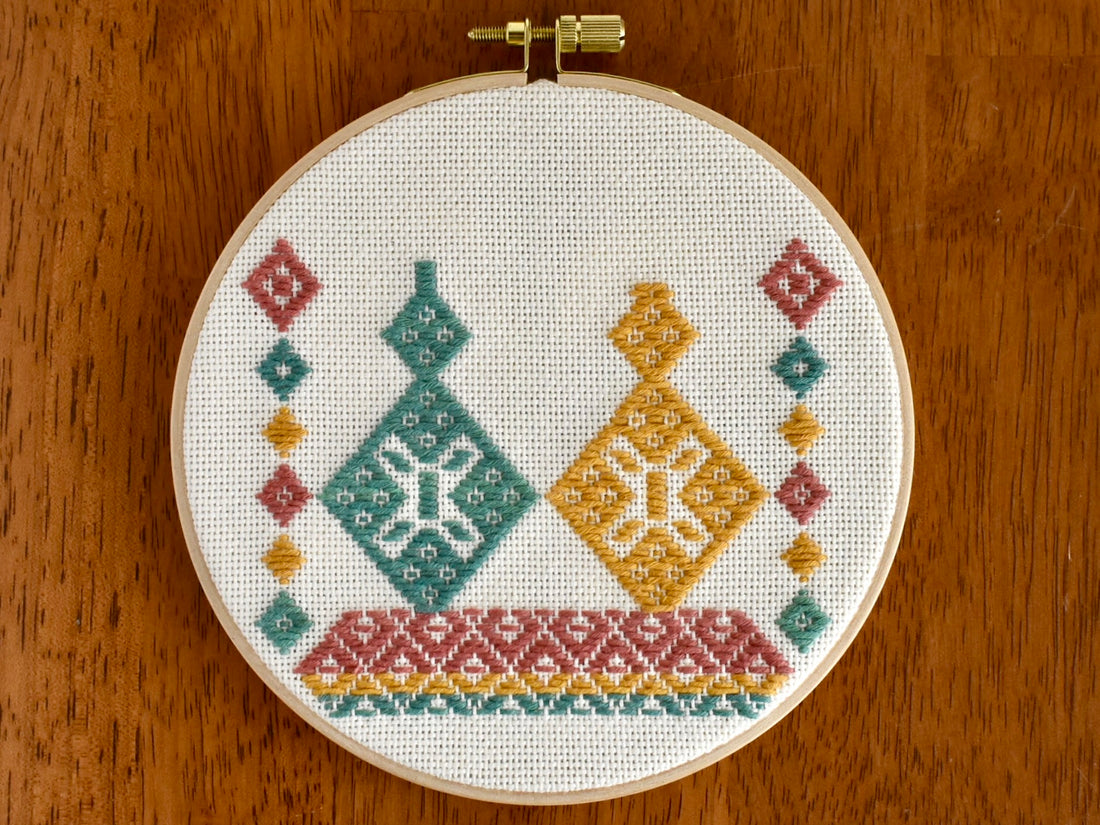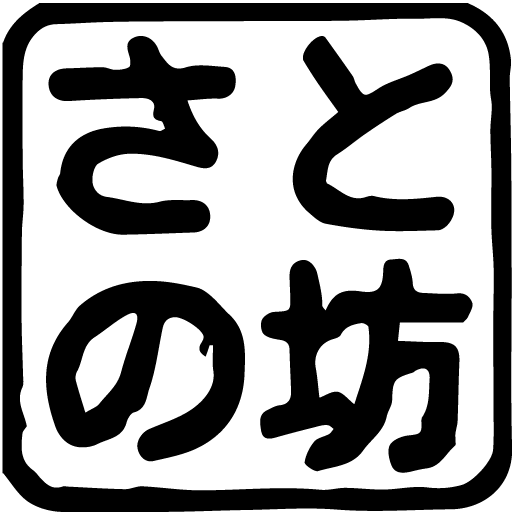
Awareness of making mistakes
◆Listening and thinking while stabbing When I do Koginzashi (when I don't have to use my brain), I listen to various books on Audible, regardless of genre. When you do this, your mind becomes clearer , and you find that you are connected to Kogin somehow, or that you find a guidepost for thinking about the questions you had about Kogin, which makes you feel happy and makes progress in your Kogin work. Lately, I've been listening to a lot of Zen and religious books, and I've come across a lot of hints for thinking about Kogin.

◆When doing Koginzashi, where the design is in the lead , you will often make mistakes, such as ``I made a mistake, so I went back'' or ``I made a mistake, but I kept going.'' I said, ``Oh, things were going well...''.
Naturally, the fact that there is a "mistake" means that there is a "correct answer," and in Koginzashi, the "correct answer" is probably the "design." Kogin-zashi has a basic pattern called ``modoko'' (it's like the smallest unit of a pattern, ``mold''), and most people enjoy kogin-zashi based on this modoko.
By the way, if you look at the old Kogin zashi called Kosaku Kogin, there are many cases in which the "mistakes" we would now call have been neatly put together (by putting the pieces together) to complete the work. (As I wrote about on my blog the other day, Mr. Ishii from Koginbank said that most of Higashi Kogin's parts can be seen in parts where they were matched.) ``There were limited threads'' and ``time was limited.'' I think that there was a reason for that, of course, but because the design did not precede the kogin-zashi, I think that every moment was the correct answer, and there was almost no concept of ``wrong''. can do. Or, ``I made a mistake, but this is also good.'' I feel that kind of magnanimity in Kosaku Kogin.

◆Feel Zen in Koginzashi
In ``Zen,'' it seems that we respect ``the present moment, as it is.'' That is similar to Koginzashi! I thought. The Kogin-zashi I'm talking about here is not the Kogin-zashi where there are mistakes in the design, but the ``Kogin-zashi where there are no mistakes,'' which expresses what's in your mind at that moment on the cloth, and is not a design obtained from calculation. When you think, ``Ah, this cross-section is so lovely, something that can only be born at this moment,'' you can feel the warmth of humans in the cloth. It's a fabric that can only be made by a person, and can only be made in that moment.

◆If you make a mistake, just leave it as is.The other day, I was asked about creating a piece of work. When I handed over the materials, I also said something like , ``If you make a mistake, just leave it as is, it's better.'' So far, I have created a few pieces that were ``just for this person''. This is a one-of-a-kind work that was created because I imagined that person and had that person in my mind, and since he was a person very close to me, I felt at ease working on it.
``There is perfection, but there is no mistake.'' ``There is perfection, but there is no correct answer.'' This was the kind of work I created, and although I don't have the work in hand, the feeling I felt at that time still remains in my mind, and it was an impressive piece of work. .
I plan to create this work over a leisurely period of about a year. I'm still at the point where I just have a vague image of it, and I'm not sure if I can say it's started or not, but I'm really looking forward to creating Kogin's work based on the premise that people will accept this ``as is'' and what kind of work will be completed. I'm looking forward to it.

I hope that everyone who enjoys the kit will cherish the moment and finish it as a piece of work, even if it doesn't go exactly as planned.
Satonobou
